Properly fitting climbing shoes are essential for performance and comfort․ This guide helps climbers choose the right size, considering factors like foot shape and climbing style․

Why Proper Fit Matters in Rock Climbing Shoes
A proper fit is crucial for optimal performance, comfort, and safety while climbing․ Ill-fitting shoes can lead to discomfort, blisters, or even compromised technique․ Snug shoes provide better support and precision, allowing climbers to feel holds more effectively․ Overly tight shoes can restrict circulation and cause pain, while loose shoes may reduce control․ A good fit enhances confidence and focus, enabling climbers to perform at their best․ Properly fitted shoes also reduce the risk of injuries and improve overall climbing efficiency․ Finding the right balance ensures a better climbing experience and helps climbers push their limits safely and effectively․
Overview of Key Factors in Sizing
When determining the right size for rock climbing shoes, several factors come into play․ Foot length and width are primary measurements, but personal comfort and climbing style also influence the fit․ Different brands may have varying sizing standards, so trying shoes on is essential․ Additionally, the type of climbing—such as sport, bouldering, or trad—affects the desired tightness and support․ Some climbers prefer a snug fit for precision, while others opt for comfort over long climbs․ Understanding these elements ensures a tailored fit that enhances performance and reduces discomfort during climbs․

Understanding Rock Climbing Shoe Sizing Systems
Rock climbing shoes use sizing systems based on length and width measurements, often varying by brand․ US, EU, and UK sizes are common, but conversions may differ slightly․
How Shoe Sizes Are Measured Across Brands
Shoe sizes are measured using standardized systems, but variations exist across brands․ Most brands use the EU, US, or UK sizing charts, focusing on foot length and width․ While some brands adopt universal measuring methods, others may differ slightly due to unique lasts or materials․ Climbers should note that sizes can vary between brands, making it essential to try shoes on or refer to brand-specific sizing guides․ Some brands also account for stretch, affecting how snug or roomy the shoe feels over time․ Understanding these differences ensures a more accurate fit tailored to individual needs and preferences․
Conversion Between US, EU, and UK Sizes
Converting shoe sizes between US, EU, and UK systems requires understanding their differences․ US sizes are based on the Brannock device, while EU sizes use Paris points, and UK sizes align closely with US but differ slightly․ Generally, EU sizes are about 1․5 sizes larger than US men’s sizes and 2․5 sizes larger than US women’s․ For example, a US men’s size 9 is approximately an EU 42․5 and a UK 8․5․ Climbers should refer to brand-specific size charts, as variations exist․ Accurate conversions ensure proper fit, crucial for performance and comfort during climbs․
Factors Influencing Climbing Shoe Size Selection
Climbing style, foot shape, and personal comfort are key factors in choosing shoe size․ Different disciplines require varying fits, from snug performance shoes to comfortable all-day models․
The Role of Climbing Style and Performance Needs
Climbing style significantly impacts shoe fit․ Sport climbers may prefer tighter shoes for precision, while trad climbers opt for comfort over long routes․ Performance needs dictate snugness and support levels, ensuring optimal grip and control․ Different disciplines demand varied fits, from tight performance shoes to comfortable all-day models․ Understanding these needs helps climbers select the right size for their specific style, enhancing both performance and comfort during climbs․ Proper fit ensures better grip, control, and overall climbing efficiency, making it a critical factor in shoe selection․
Foot Shape and Personal Comfort Preferences
Foot shape plays a crucial role in selecting climbing shoes, as different shapes require varying fits․ Narrow feet may prefer slimmer models, while wider feet need roomier designs․ Personal comfort preferences, such as snugness or roominess, also influence size choices․ Some climbers prioritize tight shoes for performance, while others opt for a more relaxed fit to avoid discomfort during long climbs․ Brands often cater to specific foot shapes, making it essential to try on shoes to ensure a match․ Comfort preferences should align with climbing style and performance needs to ensure optimal fit and satisfaction․ Proper fit enhances both performance and enjoyment․
How to Try On Climbing Shoes Effectively
Try climbing shoes in the afternoon, as feet swell throughout the day․ Wear thin socks and ensure snugness without discomfort for optimal fit assessment․
Best Practices for Fitting Climbing Shoes
When trying on climbing shoes, ensure a snug fit by standing up and wigging your toes slightly․ Avoid excessive tightness that causes discomfort․ Wear thin climbing socks to simulate actual use․ Check for even pressure across the foot, with no hotspots or pinching․ Pay attention to heel fit—minimal movement prevents blisters․ Test the shoes while laced tightly and walk around to assess flexibility․ Consider your foot shape and climbing style; narrower feet may prefer slimmer shoes․ Try multiple sizes and brands, as fits vary․ Prioritize comfort and performance to ensure optimal climbing experience․
Signs of a Good Fit vs․ a Poor Fit
A good fit feels snug but not painful, with even pressure across the foot․ Toes should lightly touch the end without curling, and the heel should stay in place․ A poor fit causes discomfort, leaves marks, or restricts movement․ If shoes feel too tight, cause pain, or lead to blisters, they’re likely ill-fitting․ Proper fit allows controlled movement for precise climbing․ Prioritize comfort and performance to avoid distractions during climbs․ A good fit enhances sensitivity and support, while a poor fit can hinder performance and cause injuries․ Ensure the shoe aligns with your foot shape and climbing style for optimal results․
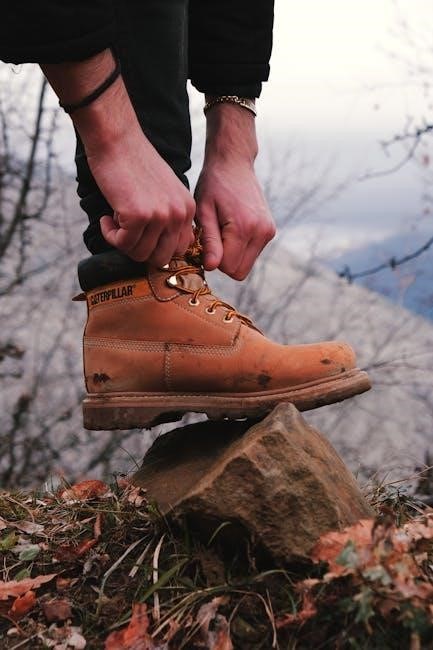
Measuring Your Foot for Climbing Shoes
Use a ruler or Brannock device to measure foot length and width accurately․ Stand while measuring for consistency, as feet expand slightly during the day․
Accurate Foot Length and Width Measurement
Measure your foot length by tracing it on paper or using a Brannock device․ Stand while measuring, as feet expand slightly during the day․ For width, measure across the widest part․ Consistency is key; measure at the same time daily․ Use a ruler to ensure precise readings, noting the longest and widest points․ Accurate measurements help match your foot shape to climbing shoe sizes, ensuring optimal fit and performance․ Different brands may fit differently, so precise data aids in selecting the best size for your needs․ This step is crucial for comfort and climbing efficiency․
When to Measure: Before or After Climbing
Measure your feet before climbing, as feet tend to swell during activity, affecting size accuracy․ Swelling can lead to tight shoes if measured post-climb․ Consistency is key; always measure at the same time․ For optimal fit, consider your feet at rest․ Climbing shoes should fit snugly, but not painfully tight․ If unsure, measure multiple times for accuracy․ Proper timing ensures reliable data for selecting the right shoe size, enhancing comfort and performance․ Accurate measurements are foundational to a good fit․
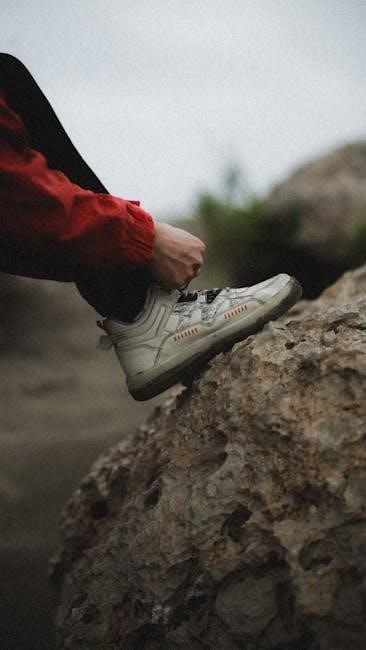
Breaking Down the Rock Climbing Shoe Size Guide
This section explores size charts for popular brands, explaining how to interpret them․ It also covers shoe stretch and break-in periods, helping climbers understand fit evolution over time․
Size Charts for Popular Climbing Shoe Brands
Each brand offers unique sizing charts, reflecting their shoe designs․ For example, La Sportiva and Five Ten provide detailed tables to help climbers match their foot length to the ideal shoe size․ These charts often list measurements in various units, such as US, EU, and UK sizes, ensuring accessibility for global climbers; Additionally, some brands include width options, catering to different foot shapes․ By consulting these charts, climbers can make informed decisions, reducing the likelihood of sizing errors and ensuring optimal comfort and performance․
Understanding Stretch and Break-In Periods
Climbing shoes may stretch over time, affecting their fit․ Leather shoes tend to stretch more than synthetic ones, while unlined leather shoes stretch the most․ This natural break-in period means climbers should initially opt for a snug fit, as the shoes will loosen slightly․ A proper break-in ensures comfort without sacrificing performance; When trying on shoes, consider the thickness of socks worn and the intended use․ A slight discomfort during the break-in is normal, but pain should be avoided․ Understanding how shoes stretch helps climbers choose the right size for long-term comfort and optimal climbing performance․

Specialized Climbing Shoe Fit Scenarios
Climbing shoes must adapt to unique fit needs, ensuring optimal performance and comfort across varying disciplines and foot shapes, while addressing personal preferences for snugness and support․
Choosing Shoes for Different Climbing Disciplines
Different climbing disciplines require specialized shoes․ For bouldering, opt for shoes with a snug, precise fit to enhance sensitivity on small holds․ Sport climbing demands a balance between comfort and performance, with a moderate fit․ Traditional climbing often prefers slightly more comfortable shoes for long routes․ Competition climbers may prioritize aggressive, tight-fitting shoes for maximum precision․ Each discipline’s unique demands mean tailoring your shoe choice to optimize performance and comfort, ensuring the right fit for the specific type of climb․
Fit Considerations for Narrow vs․ Wide Feet
Climbers with narrow feet often prefer snug, low-volume shoes to prevent excessive movement․ Wide feet benefit from high-volume models with a relaxed fit to avoid discomfort and pressure points․ Brands offer varying widths, so it’s crucial to try shoes on to ensure proper fit․ Narrow feet may find comfort in slimmer designs, while wider feet need roomier toe boxes․ Correct fit prevents pain and enhances performance․ Consider brand-specific sizing charts and reviews to find models suited to your foot shape, ensuring optimal comfort and functionality during climbs․
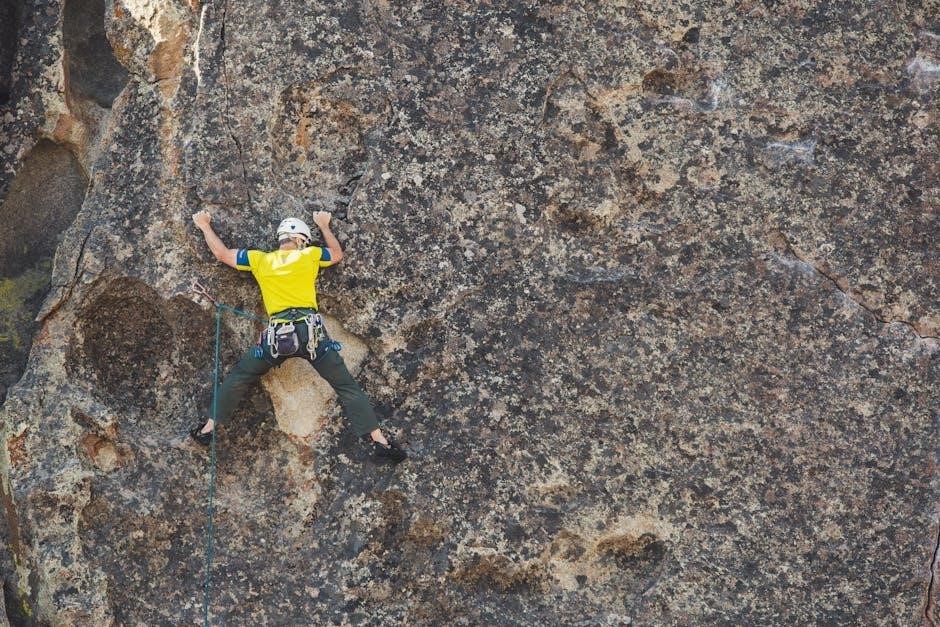
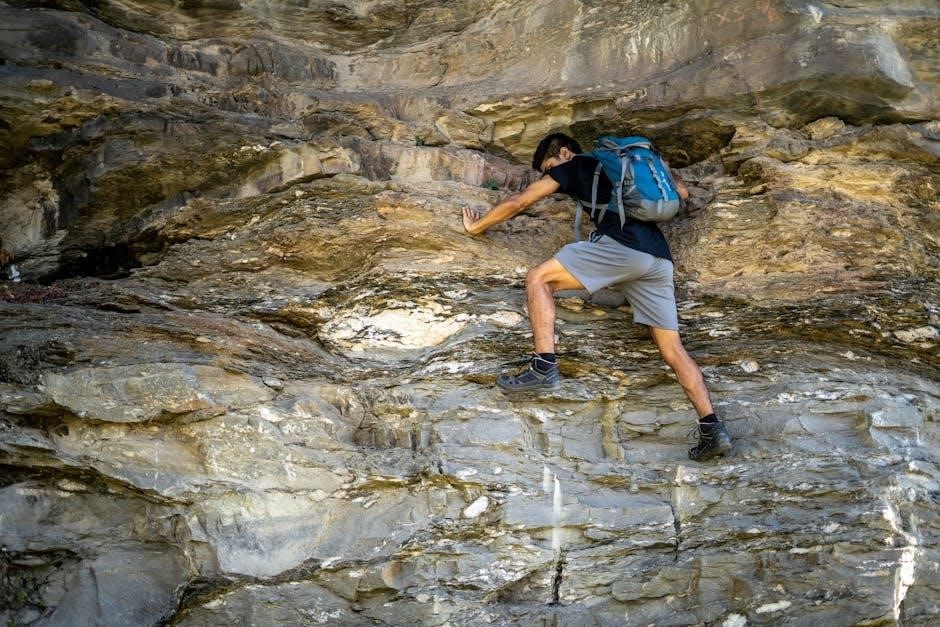
Common Mistakes in Climbing Shoe Sizing
Ignoring personal comfort for performance and not accounting for sock thickness are frequent errors․ Proper fit ensures optimal performance and comfort during climbs;
Overlooking Personal Comfort for Performance
Many climbers prioritize performance over comfort, leading to poorly fitting shoes․ Tight shoes can cause discomfort, blisters, and reduced circulation․ While a snug fit enhances sensitivity and control, excessive tightness hinders performance․ Climbing shoes should balance support and flexibility without sacrificing comfort․ Ignoring personal comfort can result in distractions during climbs and long-term foot issues․ It’s crucial to find a shoe that meets performance needs while ensuring all-day wearability․ Comfort directly impacts overall climbing experience and success, making it a vital factor in shoe selection․
Not Accounting for Sock Thickness
Socks significantly impact climbing shoe fit, yet many climbers overlook this factor․ Thicker socks add bulk, potentially causing tightness and discomfort․ Conversely, thin socks may lead to excessive room, affecting precision․ It’s essential to try on shoes with the same sock thickness intended for use․ Different sock materials and thicknesses alter the fit, so climbers should test shoes accordingly․ Ignoring sock thickness can result in improper sizing, compromising both comfort and performance․ Always consider sock choice when selecting climbing shoes to ensure an optimal fit․
Caring for Your Climbing Shoes
Proper care extends the life of climbing shoes․ Regular cleaning, storing in cool, dry places, and avoiding extreme temperatures maintain shape and performance over time․
How to Maintain Shape and Fit Over Time
Regular cleaning and proper storage are key to preserving the shape and fit of climbing shoes․ Use mild soap and water to clean the exterior, avoiding harsh chemicals that might damage materials․ Allow shoes to air dry naturally, away from direct sunlight or heat sources, to prevent excessive stretching or cracking․ Store them in a cool, dry place, away from moisture․ Consider using shoe trees or stuffing shoes with paper to maintain their shape when not in use․ Additionally, let shoes rest between climbing sessions to recover their form, ensuring optimal performance and longevity․
Cleaning and Storage Tips
Regular cleaning and proper storage are crucial for maintaining the shape and performance of climbing shoes․ Use mild soap and warm water to gently scrub away dirt and sweat, paying attention to high-friction areas․ Avoid harsh chemicals or abrasive materials that could damage the leather or synthetic materials․ Allow the shoes to air dry naturally, away from direct sunlight or heat sources․ Store them in a cool, dry place to prevent moisture buildup․ Consider using shoe trees or stuffing the shoes with paper to retain their shape․ Proper care ensures longevity, comfort, and optimal performance during climbs․
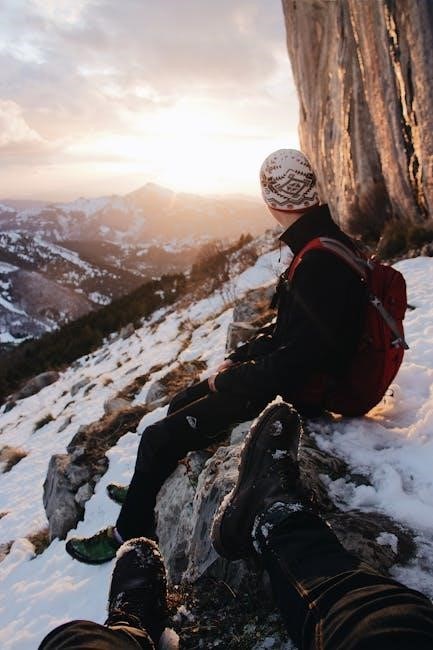
Finding the perfect climbing shoe fit ensures comfort and performance․ Regular care and proper storage extend their lifespan, while revisiting size needs as feet change guarantees optimal support always․

Final Tips for Finding the Perfect Fit
When searching for the ideal climbing shoe fit, prioritize comfort and performance by trying shoes later in the day, as feet tend to swell․ Wear the same thickness of socks you plan to climb in to ensure accuracy․ Consider the climbing style—stiffer shoes for all-day routes, softer for precise edging․ Don’t overlook personal comfort for performance gains; ill-fitting shoes can hinder progress and cause discomfort․ Regularly reassess your size as feet change over time due to training or age․ Proper care, like cleaning and storing shoes correctly, maintains their shape and fit, extending their lifespan and ensuring consistent performance․
Importance of Revisiting Shoe Size as Feet Change
Feet naturally change over time due to factors like training, age, or injuries, which can alter their shape and size․ Regularly reassessing climbing shoe fit ensures optimal performance and comfort․ Ignoring these changes can lead to poor fit, discomfort, or even hindered climbing ability․ As feet adapt, climbers may need smaller or larger sizes to accommodate changes in width, length, or arch shape․ Proactive size adjustments prevent issues like blisters or reduced sensitivity․ Schedule periodic fit checks, especially after significant training phases or foot changes, to maintain the best connection between foot and shoe for enhanced climbing efficiency and enjoyment․
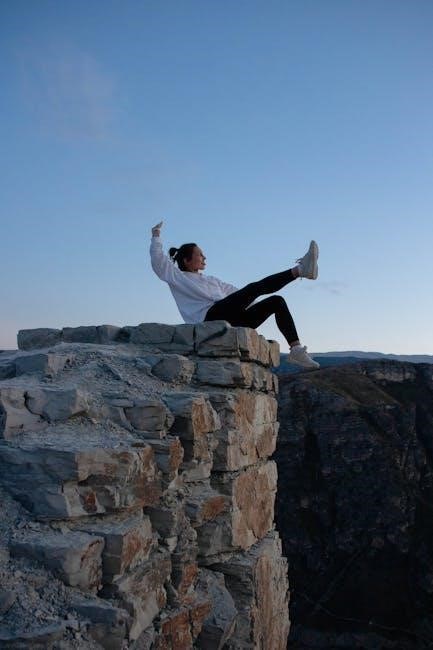
Be First to Comment